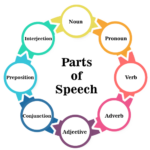Hi, students! 🌟 Today, let’s talk about Sentence Structure. Understanding how sentences work will help you write and speak clearly in English. We’ll break it down step by step so that you can easily follow along.
What Is Sentence Structure?
Sentence structure refers to the way words are arranged in a sentence to make sense. In English, we usually follow the SVO pattern:
- S: Subject (who or what is doing the action)
- V: Verb (the action)
- O: Object (who or what is affected by the action)
For example:
“She (S) eats (V) pizza (O).”
Types of Sentence Structure
There are four main types of sentence structures in English. Let’s look at each one:
- Simple Sentence
- Compound Sentence
- Complex Sentence
- Compound-Complex Sentence
1. Simple Sentence
Definition: A simple sentence has one independent clause (a complete thought with a subject and verb).
How to Use: Use a simple sentence when you want to express one complete idea.
Example:
“He runs every day.”
- Subject: He
- Verb: runs
2. Compound Sentence
Definition: A compound sentence has two independent clauses joined by a conjunction (like and, but, or).
How to Use: Use a compound sentence to connect two related ideas.
Example:
“I like pizza, and she likes pasta.”
- Independent Clause 1: I like pizza.
- Independent Clause 2: She likes pasta.
- Conjunction: and
3. Complex Sentence
Definition: A complex sentence has one independent clause and at least one dependent clause (a part that can’t stand alone).
How to Use: Use a complex sentence to add more detail or explain something.
Example:
“She went to bed because she was tired.”
- Independent Clause: She went to bed.
- Dependent Clause: because she was tired.
4. Compound-Complex Sentence
Definition: A compound-complex sentence has at least two independent clauses and one dependent clause.
How to Use: Use this type of sentence when you want to give detailed information.
Example:
“I finished my homework, but I didn’t understand everything because the lesson was hard.”
- Independent Clause 1: I finished my homework.
- Independent Clause 2: I didn’t understand everything.
- Dependent Clause: because the lesson was hard.
How Tenses Fit into Sentence Structure
Tenses indicate when an action happens, and they can be used in all sentence structures. Here’s how:
- Present Tense (Simple, Continuous, Perfect, and Perfect Continuous):
- Simple: She writes every day.
- Continuous: She is writing now.
- Perfect: She has written the letter.
- Perfect Continuous: She has been writing for an hour.
- Past Tense (Simple, Continuous, Perfect, and Perfect Continuous):
- Simple: She wrote the letter yesterday.
- Continuous: She was writing when I called her.
- Perfect: She had written the letter before dinner.
- Perfect Continuous: She had been writing for an hour when I arrived.
- Future Tense (Simple, Continuous, Perfect, and Perfect Continuous):
- Simple: She will write the letter tomorrow.
- Continuous: She will be writing the letter tonight.
- Perfect: She will have written the letter by 8 PM.
- Perfect Continuous: She will have been writing for an hour by 8 PM.
Table: Types of Sentences and Examples
| Sentence Type | Definition | Example |
|---|---|---|
| Simple Sentence | A sentence with one independent clause. | She plays football. |
| Compound Sentence | A sentence with two independent clauses joined by a conjunction. | He likes coffee, but she likes tea. |
| Complex Sentence | A sentence with one independent clause and one dependent clause. | I stayed home because it was raining. |
| Compound-Complex Sentence | A sentence with two independent clauses and one dependent clause. | She finished her homework, but she was tired because it was late. |
Putting It All Together: A Short Essay
Let’s see how different sentence structures and tenses work in a short essay.
Essay: “My Favourite Hobby”
“I love playing basketball (Simple Sentence). I play every weekend, and I have improved a lot (Compound Sentence). Because I practice often, I can play better than before (Complex Sentence). I will continue practicing, and I hope to join the school team because it is my dream (Compound-Complex Sentence).”
Understanding sentence structure helps you organize your ideas clearly. Whether you’re using simple sentences or more complex ones, remember that each structure serves a purpose. Practice using different sentence types with the right tenses to make your writing more interesting and varied!
If you have any questions, feel free to ask in the comments! Happy learning! 😊

